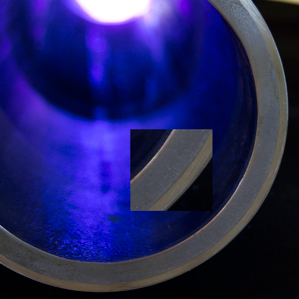Nano-Manufacturing Makes Steel 10 Times Stronger
An inexpensive new process can increase the strength of metals such as steel by as much as 10 times, and make them much more resistant to corrosion. If the modified metals pass field testing, the new process could go on to make bridges and other infrastructure last far longer; it could also make cars lighter and therefore more fuel-efficient.

The Seattle-based startup that developed the process, Modumetal, is commercializing it in part with collaboration with the oil companies Chevron, Conoco-Philips, and Hess.
Parts made using the technology are being tested in oil fields now. Some oil contains highly corrosive chemicals such as hydrogen sulfide that quickly damage production equipment. The new technology could make those parts last much longer and thus lower the cost of pursuing unconventional sources of oil. That could be just the first of a wide range of applications.
The advance is based on the fact that controlling the structure of metals at the nanoscale can imbue those materials with new properties. This has been possible for some time, but it’s been difficult to do reliably and economically with large pieces of metal. Modumetal has developed a process that gives it precise control over the structure of metals, and which allows it to make parts that are meters long. CEO Christina Lomasney says the process costs the same as conventional metal treatments such as galvanization.
Modumetal uses an advanced form of electroplating, a process already used to make the chrome plating you might see on the engine and exhaust pipes of a motorcycle. Electroplating involves immersing a metal part in a chemical bath containing various metal ions, and then applying an electrical current to cause those ions to form a metal coating.
The company uses a bath that contains more than one kind of metal ion and controls how ions are deposited by varying the electrical current. By changing the current at precise moments, it can create a layered structure, with each layer being several nanometers thick and of different composition. The final coating can be up to a centimeter thick and can greatly change the properties of the original material.
David Lashmore, a professor of materials science at the University of New Hampshire who has conducted work in the area, says nano-engineered layers can make a material stronger by stopping cracks from moving through it.
Lashmore says making the process work at a large scale requires a detailed understanding of the physics and chemistry involved to produce exactly the right alloys. Modumetal’s work is “really impressive,” he says.
Modumetal is ramping up its production capacity at its factory in Snohomish County, Washington. The company’s cost claims have yet to be proved in large-scale production, and before the materials can be widely used, standards bodies will need to develop tests to ensure their performance.
Deep Dive
Climate change and energy
The problem with plug-in hybrids? Their drivers.
Plug-in hybrids are often sold as a transition to EVs, but new data from Europe shows we’re still underestimating the emissions they produce.
Harvard has halted its long-planned atmospheric geoengineering experiment
The decision follows years of controversy and the departure of one of the program’s key researchers.
Why hydrogen is losing the race to power cleaner cars
Batteries are dominating zero-emissions vehicles, and the fuel has better uses elsewhere.
Decarbonizing production of energy is a quick win
Clean technologies, including carbon management platforms, enable the global energy industry to play a crucial role in the transition to net zero.
Stay connected
Get the latest updates from
MIT Technology Review
Discover special offers, top stories, upcoming events, and more.